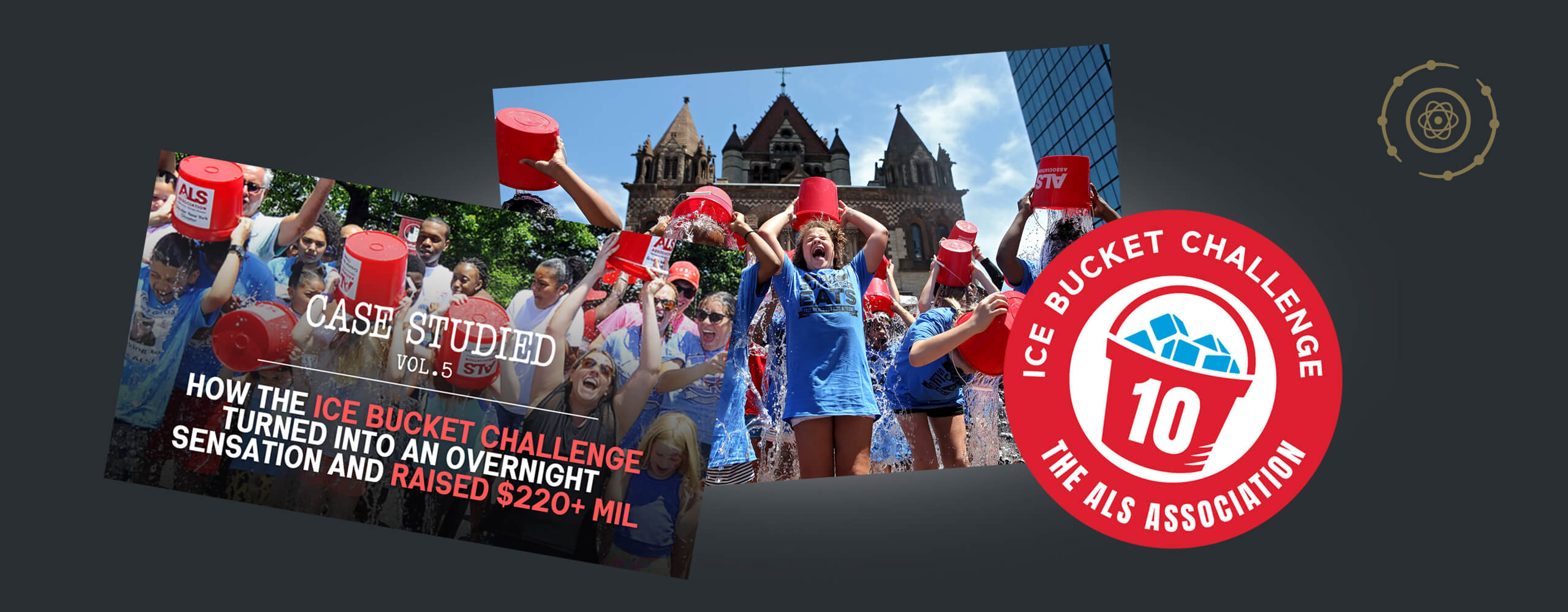|
Getting your Trinity Audio player ready... |
The ALS Ice Bucket Challenge took the world by storm in the summer of 2014, becoming a viral sensation that not only raised awareness for amyotrophic lateral sclerosis (ALS) but also inspired millions of people to donate to ALS research. Participants were challenged to either pour a bucket of ice-cold water over their heads or donate to ALS, though many did both. The campaign exploded as celebrities, athletes, and everyday people began participating and nominating others, spreading the challenge across social media platforms worldwide. Its simplicity, shareability, and the power of community engagement turned the Ice Bucket Challenge into a global movement that ultimately raised over $220 million for ALS organisations.
CLIENT
The ALS Ice Bucket Challenge was closely associated with the ALS Association, a nonprofit organisation based in the United States dedicated to finding a cure for ALS, often referred to as Lou Gehrig’s disease. ALS is a neurodegenerative disorder that affects the nerve cells in the brain and spinal cord, leading to loss of muscle control, paralysis, and eventually death. The disease currently has no cure, and its debilitating effects can place an enormous burden on patients and their families.
Before the Ice Bucket Challenge, public awareness of ALS was limited, and the organisation struggled to secure the necessary funding for research and patient care. The viral campaign significantly elevated awareness of ALS and created an unprecedented influx of donations, allowing the ALS Association to increase research efforts and support for those affected by the disease.
CHALLENGE
The ALS Association’s biggest challenge was raising public awareness and securing funding for research. ALS, despite its devastating nature, was not widely known or discussed. The organisation needed a strategy to break through the noise and create visibility for their cause, but with limited resources, they needed a campaign that could organically spread across social networks.
The strategy behind the Ice Bucket Challenge was simple but effective:
Simplicity and Participation: The challenge involved a straightforward task that was easy for anyone to do—dump a bucket of ice water on yourself, film it, and challenge others to do the same. The low barrier to participation made it accessible to all ages, from kids to grandparents.
Virality and Nomination: Participants were encouraged to nominate three others to complete the challenge within 24 hours, adding an element of urgency and incentivising participation. This nomination system created a network effect, where the challenge quickly spread from one person to another, multiplying rapidly.
Leveraging Social Media: The campaign relied heavily on social media platforms like Facebook, Instagram, and Twitter, where users posted their videos, tagged friends, and shared their participation. With millions of users sharing their Ice Bucket Challenge videos, the campaign took on a life of its own.
Celebrity Endorsements: Celebrities and influencers helped amplify the campaign. Famous figures like Bill Gates, Oprah Winfrey, and LeBron James took part, which significantly boosted visibility. This helped the challenge reach an even wider audience and created a sense of legitimacy around the cause.
CHANGE
The ALS Ice Bucket Challenge achieved success in several key ways:
Massive Engagement: People of all ages and backgrounds participated, from children to adults, creating a shared experience that brought together communities globally. The nomination aspect kept the challenge fresh and ensured it continued spreading across demographics and countries.
Celebrity Involvement: High-profile celebrities, politicians, and business figures participated, using their platforms to generate further awareness and increase the challenge’s visibility. With social media posts from A-listers like Chris Pratt, Mark Zuckerberg, and even former President George W. Bush, the challenge gained mainstream media attention and quickly became a worldwide phenomenon.
Social Media Power: The campaign demonstrated the power of social media to drive engagement and raise awareness. Platforms like Facebook, Twitter, and Instagram allowed videos to be shared widely, sparking a global conversation about ALS. The Ice Bucket Challenge became one of the most successful examples of a cause-driven viral campaign.
Fundraising Success: The challenge raised over $220 million for ALS research and patient support worldwide. The funds were used to advance research, resulting in significant scientific breakthroughs, including the discovery of a new ALS gene. The influx of donations also enabled organisations to provide more support for ALS patients and their families.
Increased Awareness: Before the challenge, many people were unfamiliar with ALS. The viral nature of the campaign not only generated donations but also educated millions about the disease and its effects on those who suffer from it.
CONCLUSION
Moving forward, marketers will look to the ALS Ice Bucket Challenge as a blueprint for how to craft campaigns that harness the viral potential of social media, tap into human emotion, and rely on peer-to-peer engagement to drive both awareness and action. The challenge also reinforced the idea that simplicity, coupled with a meaningful cause, can inspire people to participate and spread a message organically.
For future campaigns, marketers can take away the importance of creating a shareable, easily executable concept that includes an element of social pressure or engagement (such as nominating others). With the right combination of emotional appeal, inclusivity, and digital reach, campaigns can create lasting impacts similar to that of the ALS Ice Bucket Challenge, helping to bring attention to causes that need it most.
Nucleus Vision Digital and Design Legends
A full-service Marketing and Design Agency
hero@nucleusv.com
www.nucleusvision.digital


